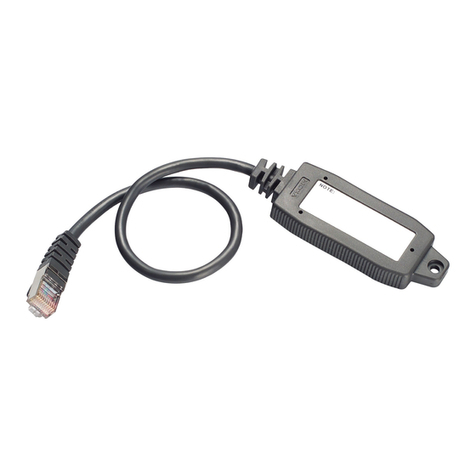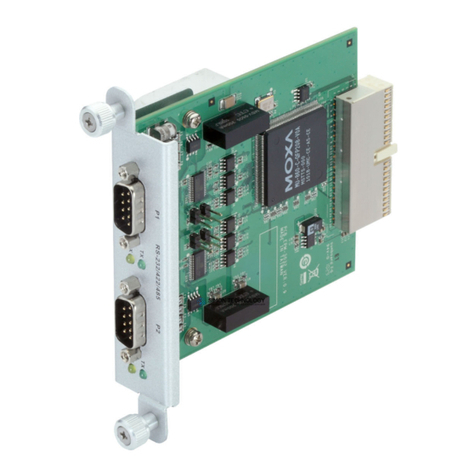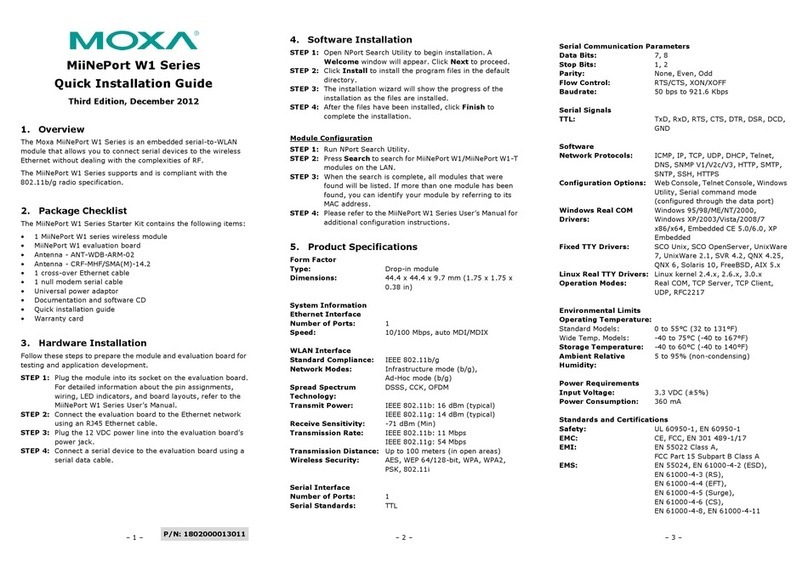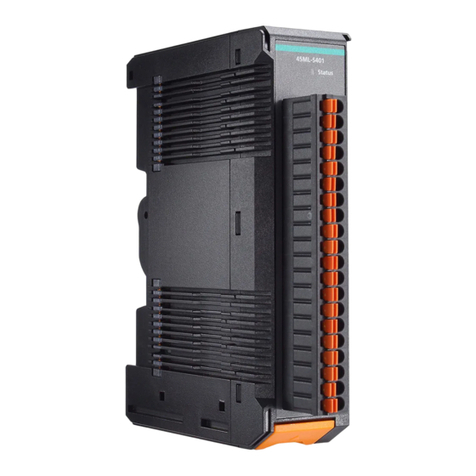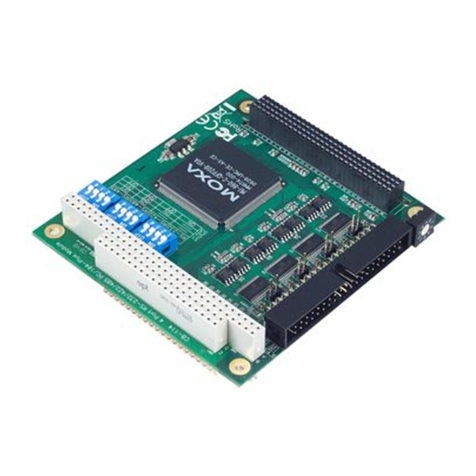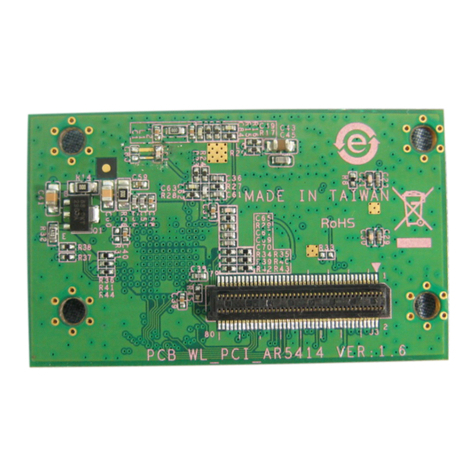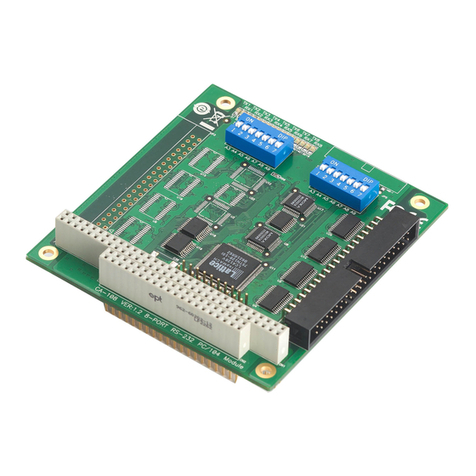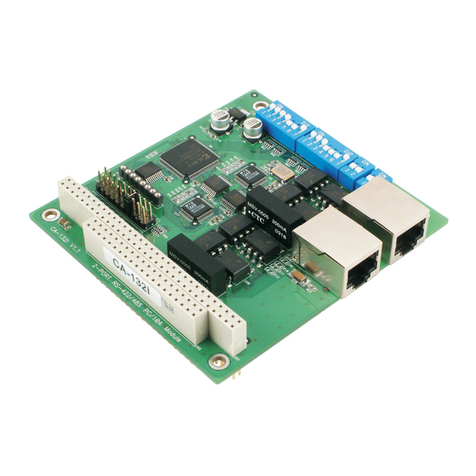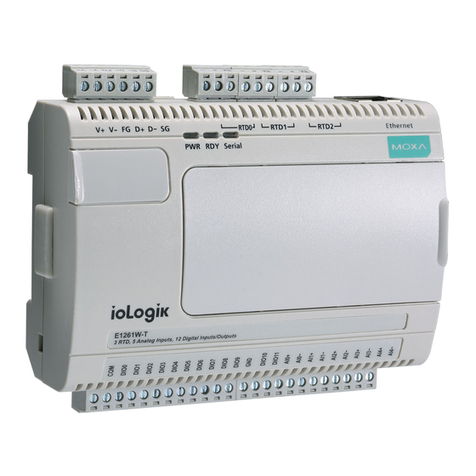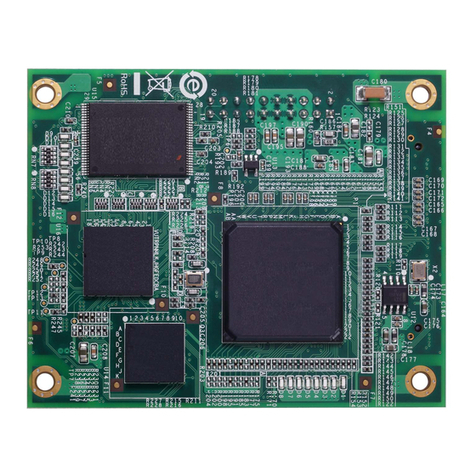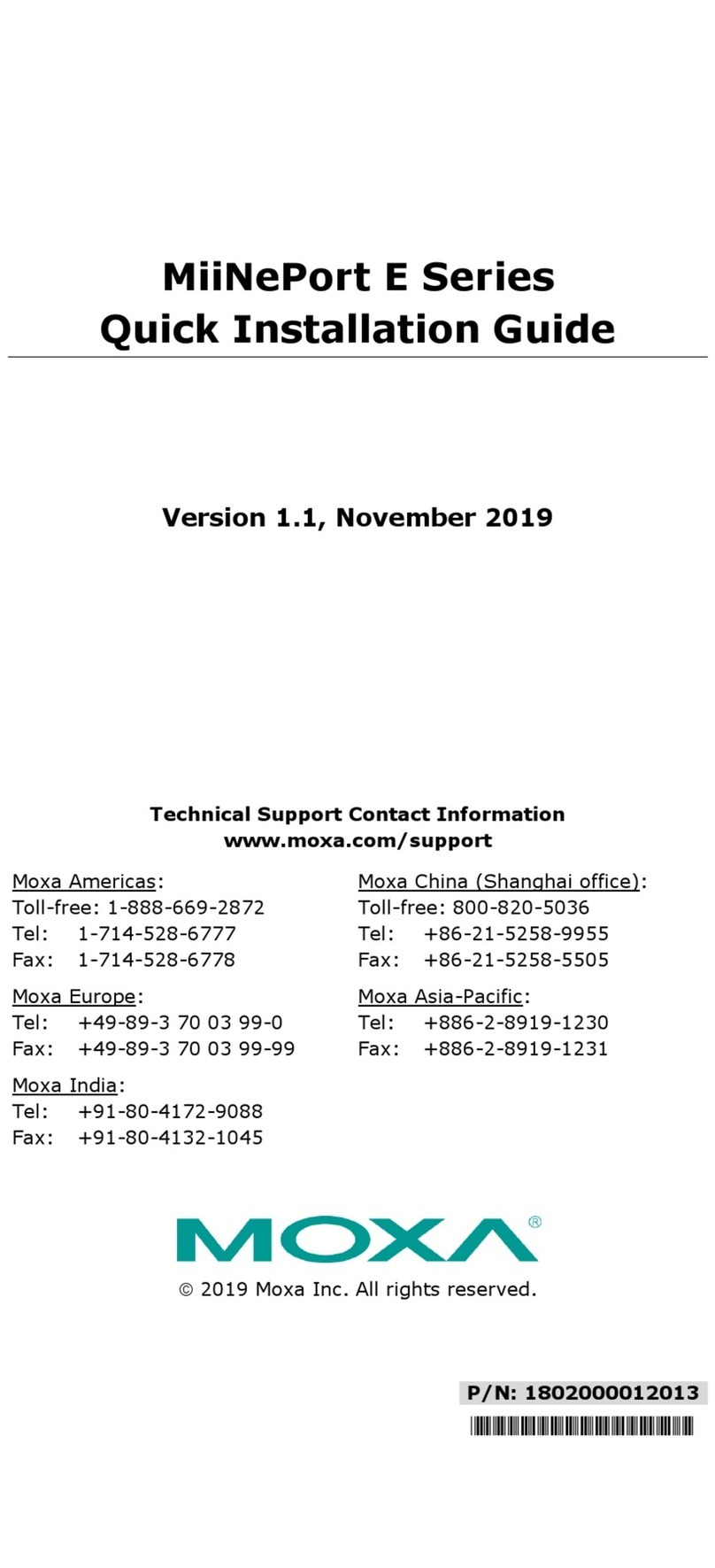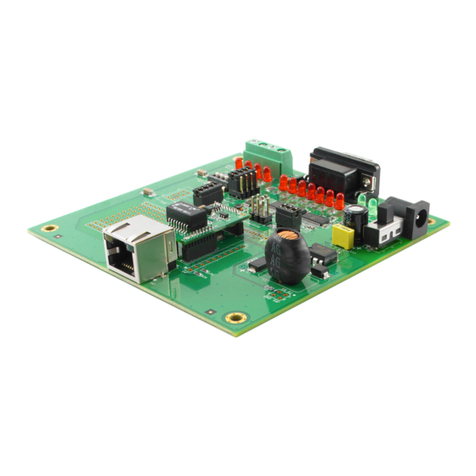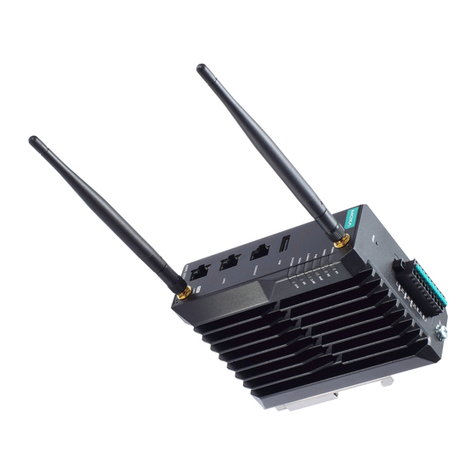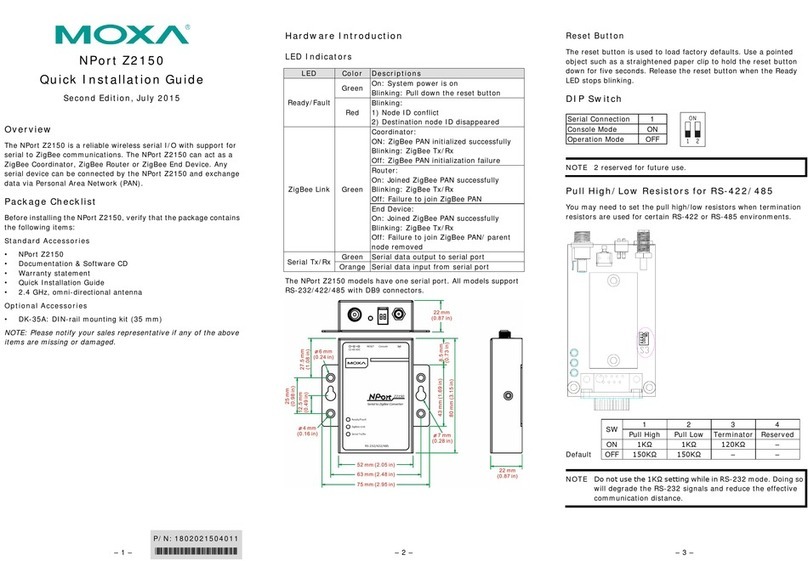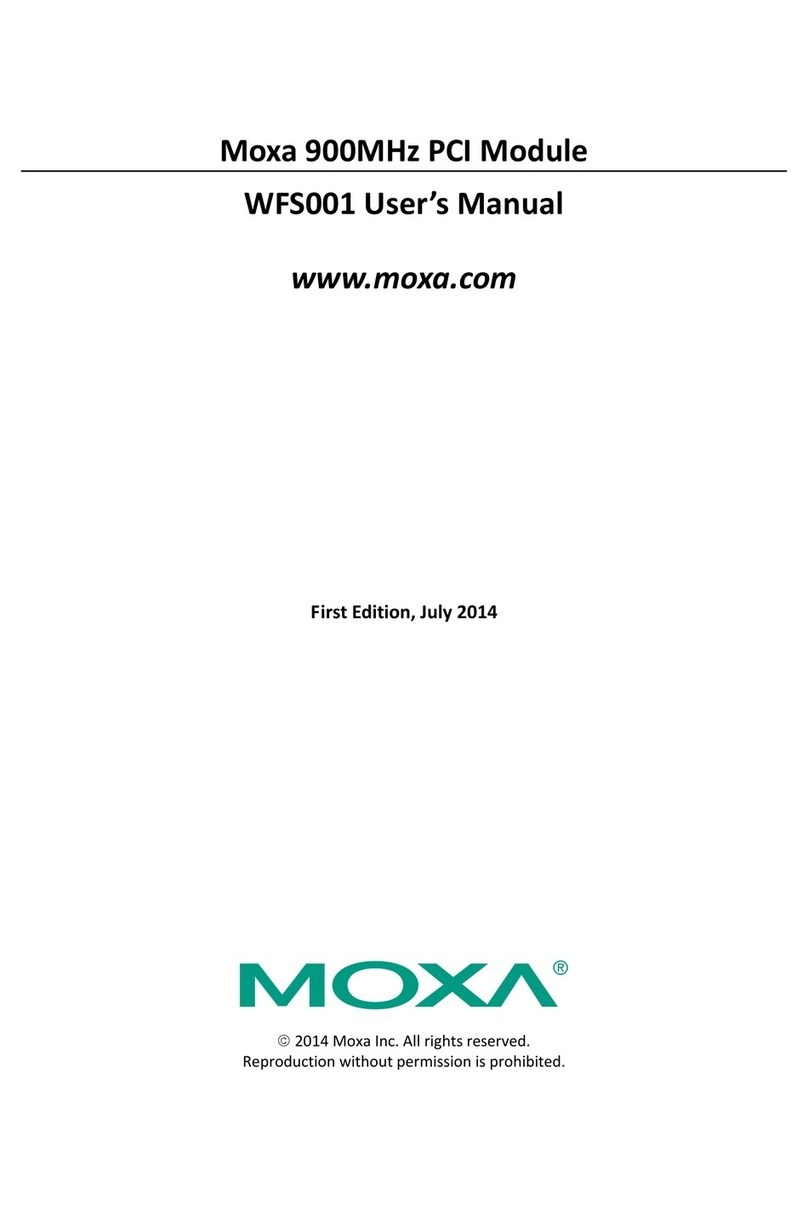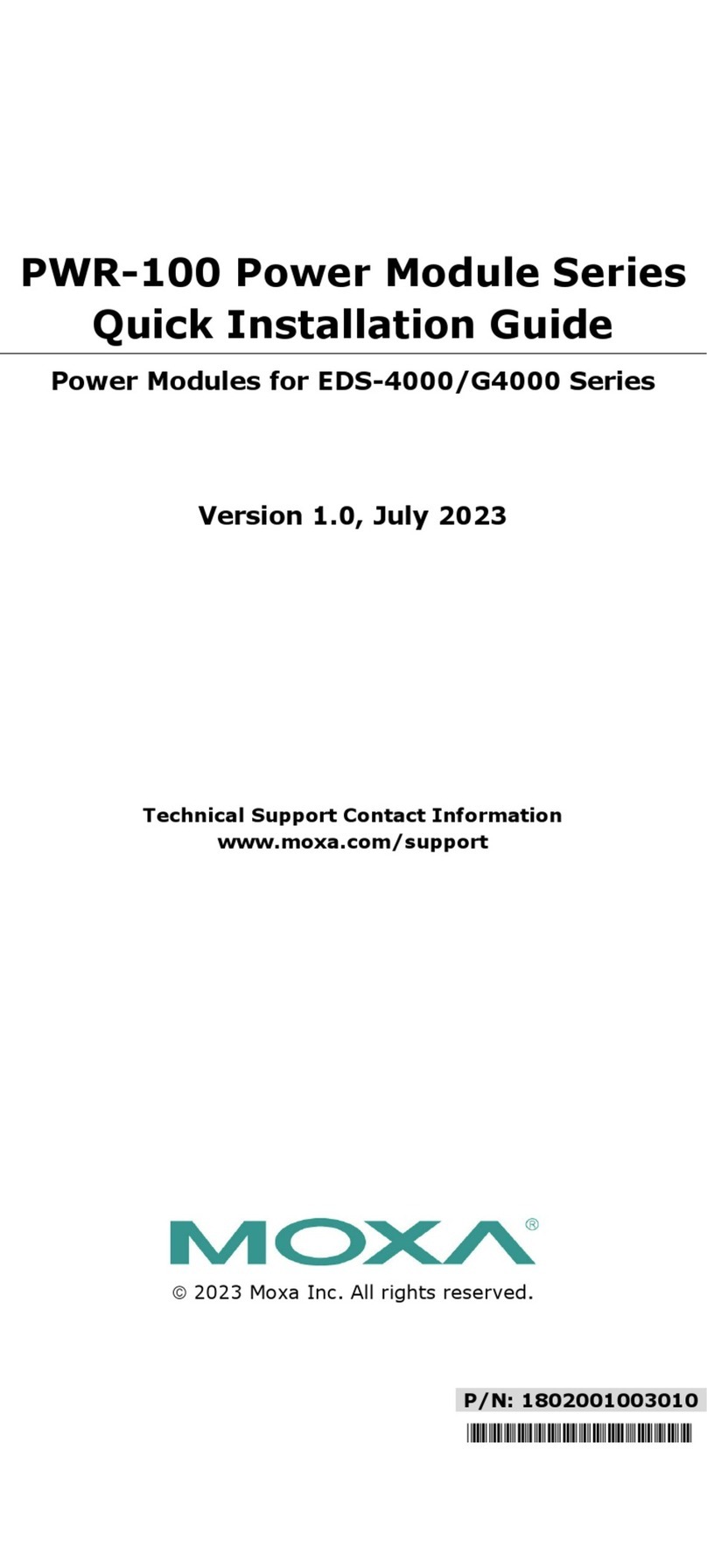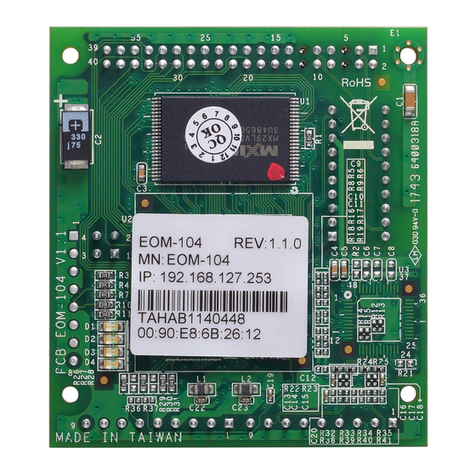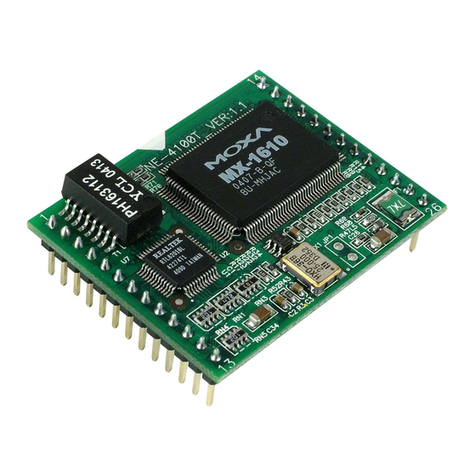
– 1 – – 2 – – 3 –
P/N: 1802000013010
MiiNePort W1 Series
Quick Installation Guide
Second Edition, June 2012
1. Overview
The Moxa MiiNePort W1 Series is an embedded serial-to-WLAN
module that allows you to connect serial devices to the wireless
Ethernet without dealing with the complexities of RF.
The MiiNePort W1 Series supports and is compliant with the
802.11b/g radio specification.
2. Package Checklist
The MiiNePort W1 Series Starter Kit contains the following items:
•1 MiiNePort W1 series wireless module
•MiiNePort W1 evaluation board
•Antenna - ANT-WDB-ARM-02
•Antenna - CRF-MHF/SMA(M)-14.2
•1 cross-over Ethernet cable
•1 null modem serial cable
•Universal power adaptor
•Documentation and software CD
•Quick installation guide
•Warranty card
3. Hardware Installation
Follow these steps to prepare the module and evaluation board for
testing and application development.
Plug the module into its socket on the evaluation board.
For detailed information about the pin assignments,
wiring, LED indicators, and board layouts, refer to the
MiiNePort W1 Series User’s Manual.
Connect the evaluation board to the Ethernet network
using an RJ45 Ethernet cable.
Plug the 12 VDC power line into the evaluation board’s
power jack.
Connect a serial device to the evaluation board using a
serial data cable.
4. Software Installation
NPort Search Utility to begin installation. A
Welcome window will appear. Click Next to proceed.
to install the program files in the default
The installation wizard will show the progress of the
installation as the files are installed.
After the files have been installed, click Finish
to
complete the installation.
Module Configuration
Run NPort Search Utility.
Press Search to search for MiiNePort W1/MiiNePort W1-T
modules on the LAN.
When the search is complete, all modules that were
found will
be listed. If more than one module has been
found, you can identify your
module by referring to its
Please refer to the MiiNePort W1 Series User’s Manual for
additional configuration instructions.
5. Product Specifications
44.4 x 44.4 mm (1.75 x 1.75 in)
10/100 Mbps, auto MDI/MDIX
Infrastructure mode (b/g),
Ad-Hoc mode (b/g)
Spread Spectrum
Technology:
IEEE 802.11b: 16 dBm (typical)
IEEE 802.11g: 14 dBm (typical)
Up to 100 meters (in open areas)
AES, WEP 64/128-bit, WPA, WPA2,
PSK, 802.11i
Serial Communication Parameters
TxD, RxD, RTS, CTS, DTR, DSR, DCD,
GND
IP, TCP, UDP, DHCP, Telnet,
DNS, SNMP V1/V2c/V3, HTTP, SMTP,
SNTP, SSH, HTTPS
Web Console, Telnet Console, Windows
Utility, Serial command mode
(configured through the data port)
Windows Real COM
Drivers:
Windows 95/98/ME/NT/2000,
Windows XP/2003/Vista/2008/7
x86/x64, Embedded CE 5.0/6.0, XP
Embedded
SCO Unix, SCO OpenServer, UnixWare
7, UnixWare 2.1, SVR 4.2, QNX 4.25,
QNX 6, Solaris 10, FreeBSD, AIX 5.x
Linux kernel 2.4.x, 2.6.x, 3.0.x
Real COM, TCP Server, TCP Client,
UDP, RFC2217
-40 to 75°C (-40 to 167°F)
-40 to 60°C (-40 to 140°F)
Ambient Relative
Humidity:
-condensing)
400 mA @ 3.3 VDC,
330 mA @ 5 VDC input max.
Standards and Certifications
EN 55022 Class A,
FCC Part 15 Subpart B Class A
EN 55024, EN 61000-4-2 (ESD),
EN 61000
-4-3 (RS),
-4-4 (EFT),
-4-5 (Surge),
-4-6 (CS),
EN 61000-4-8, EN 61000-4-11
